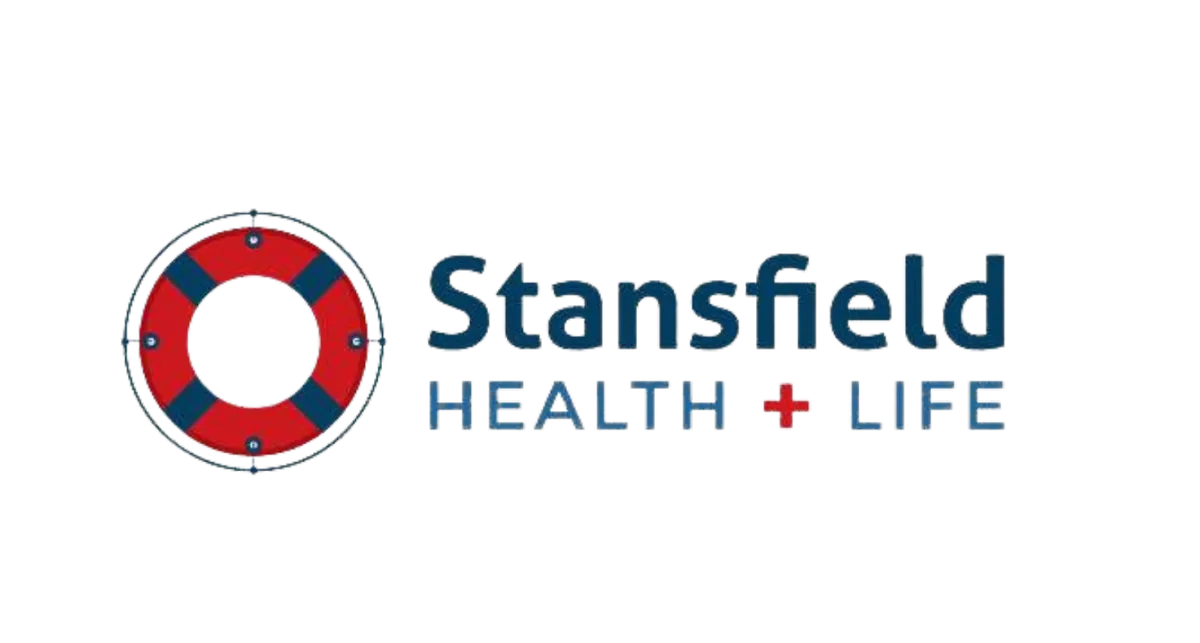
CALL US NOW!
Medicare
Resources
Medicare
Resources
WHAT YOU NEED TO KNOW WHEN GETTING STARTED WITH MEDICARE
What is Medicare?

Medicare Advantage Plans: Comprehensive Coverage for Enhanced Healthcare
Introduction
At Stansfield Health and Life, we understand the importance of securing comprehensive healthcare coverage that meets your specific needs. That's why we're dedicated to providing you with detailed information about Medicare Advantage plans. In this article, we will delve into the intricacies of Medicare Advantage plans, exploring their benefits, coverage options, and why they are a valuable alternative to traditional Medicare. By the end, you'll have a comprehensive understanding of Medicare Advantage plans, empowering you to make informed decisions regarding your healthcare.
Understanding Medicare Advantage Plans
Medicare Advantage plans, also known as Medicare Part C, are private health insurance plans that offer an alternative to Original Medicare. These plans combine the benefits of Medicare Part A (hospital insurance) and Medicare Part B (medical insurance) into a single package. Additionally, many Medicare Advantage plans often include prescription drug coverage (Part D) and other supplemental benefits, such as vision, dental, and hearing coverage.
The Benefits of Medicare Advantage Plans
Comprehensive Coverage: Medicare Advantage plans provide a wide range of coverage options, allowing you to tailor your healthcare plan to your individual needs. With a Medicare Advantage plan, you can often access services beyond those covered by Original Medicare, such as preventive care, wellness programs, and even fitness memberships.
Convenience: By opting for a Medicare Advantage plan, you can consolidate your healthcare coverage into a single plan, simplifying the administrative process. Instead of managing multiple plans, you'll have one plan that covers all your healthcare needs, providing you with peace of mind and convenience.
Prescription Drug Coverage: Many Medicare Advantage plans include prescription drug coverage, helping you save on medication costs. This integrated coverage eliminates the need for a separate Part D plan, streamlining your healthcare experience.
Financial Protection: Medicare Advantage plans often come with out-of-pocket maximums, limiting your annual expenses for covered services. This financial protection ensures that you won't face excessive healthcare costs, providing you with added financial security.
Types of Medicare Advantage Plans
Medicare Advantage plans offer different types of coverage to suit varying healthcare needs. The most common types include:
Health Maintenance Organization (HMO) Plans: HMO plans generally require you to select a primary care physician (PCP) and seek referrals from your PCP for specialist care. These plans often have a network of providers, and you may need to receive care within that network, except for emergency situations.
Preferred Provider Organization (PPO) Plans: PPO plans offer more flexibility when choosing healthcare providers. While you can receive care outside the network, you'll typically pay lower out-of-pocket costs when staying within the preferred network of providers.
Private Fee-for-Service (PFFS) Plans: PFFS plans determine how much they will pay healthcare providers and how much you'll be responsible for paying when you receive care. Not all providers may accept PFFS plans, so it's important to ensure your preferred providers are included in the plan's network.
Special Needs Plans (SNPs): SNPs cater to individuals with specific health conditions or specialized needs, such as those with chronic illnesses or residing in long-term care facilities. These plans are designed to provide targeted care and support for individuals with unique healthcare requirements.
Medical Savings Account (MSA) Plans: MSA plans combine a high-deductible health plan with a medical savings account. The plan deposits funds into the account, which you can use to pay for healthcare services until you reach the deductible.
How to Enroll in a Medicare Advantage Plan
Enrolling in a Medicare Advantage plan is a straightforward process. To get started, follow these steps:
Research and Compare Plans: Visit our website or contact our knowledgeable representatives to explore the available Medicare Advantage plans in your area. Consider factors such as coverage, network providers, prescription drug coverage, and additional benefits.
Verify Eligibility: Ensure you meet the eligibility requirements for Medicare Advantage plans. Generally, individuals must be enrolled in Medicare Part A and Part B, live in the plan's service area, and not have end-stage renal disease (ESRD).
Enrollment Periods: There are specific enrollment periods during which you can join, switch, or disenroll from a Medicare Advantage plan. The Annual Enrollment Period (AEP), which runs from October 15 to December 7 each year, is the most common time to make changes to your coverage.
Enroll: Once you've chosen a Medicare Advantage plan that suits your needs, contact our team or enroll directly through our website. We'll guide you through the enrollment process, ensuring a seamless transition to your new healthcare coverage.
Conclusion
Medicare Advantage plans offer an all-inclusive solution for your healthcare needs, combining the benefits of Medicare Parts A and B with additional coverage options. With comprehensive coverage, added benefits, and the convenience of managing your healthcare under one plan, Medicare Advantage plans empower you to take control of your health and well-being. Reach out to our team today or visit our website to explore the wide range of Medicare Advantage plans available and secure the coverage that best suits your unique requirements.
At Stansfield Health and Life, we strive to provide the most accurate and up-to-date information. Please note that Medicare Advantage plans may vary in availability and coverage options depending on your location and specific circumstances. We recommend reaching out to our experienced representatives or visiting our website for personalized assistance tailored to your needs. Your health is our priority, and we're here to guide you every step of the way.
Book Your “No Obligation” Consultation from a local
Medicare Insurance Plan Specialist
Attend our “live” local Medicare Education Workshop
WHAT YOU NEED TO KNOW WHEN GETTING STARTED WITH MEDICARE
What is Medicare?

Medicare Advantage Plans: Comprehensive Coverage for Enhanced Healthcare
Introduction
At Stansfield Health and Life, we understand the importance of securing comprehensive healthcare coverage that meets your specific needs. That's why we're dedicated to providing you with detailed information about Medicare Advantage plans. In this article, we will delve into the intricacies of Medicare Advantage plans, exploring their benefits, coverage options, and why they are a valuable alternative to traditional Medicare. By the end, you'll have a comprehensive understanding of Medicare Advantage plans, empowering you to make informed decisions regarding your healthcare.
Understanding Medicare Advantage Plans
Medicare Advantage plans, also known as Medicare Part C, are private health insurance plans that offer an alternative to Original Medicare. These plans combine the benefits of Medicare Part A (hospital insurance) and Medicare Part B (medical insurance) into a single package. Additionally, many Medicare Advantage plans often include prescription drug coverage (Part D) and other supplemental benefits, such as vision, dental, and hearing coverage.
The Benefits of Medicare Advantage Plans
Comprehensive Coverage: Medicare Advantage plans provide a wide range of coverage options, allowing you to tailor your healthcare plan to your individual needs. With a Medicare Advantage plan, you can often access services beyond those covered by Original Medicare, such as preventive care, wellness programs, and even fitness memberships.
Convenience: By opting for a Medicare Advantage plan, you can consolidate your healthcare coverage into a single plan, simplifying the administrative process. Instead of managing multiple plans, you'll have one plan that covers all your healthcare needs, providing you with peace of mind and convenience.
Prescription Drug Coverage: Many Medicare Advantage plans include prescription drug coverage, helping you save on medication costs. This integrated coverage eliminates the need for a separate Part D plan, streamlining your healthcare experience.
Financial Protection: Medicare Advantage plans often come with out-of-pocket maximums, limiting your annual expenses for covered services. This financial protection ensures that you won't face excessive healthcare costs, providing you with added financial security.
Types of Medicare Advantage Plans
Medicare Advantage plans offer different types of coverage to suit varying healthcare needs. The most common types include:
Health Maintenance Organization (HMO) Plans: HMO plans generally require you to select a primary care physician (PCP) and seek referrals from your PCP for specialist care. These plans often have a network of providers, and you may need to receive care within that network, except for emergency situations.
Preferred Provider Organization (PPO) Plans: PPO plans offer more flexibility when choosing healthcare providers. While you can receive care outside the network, you'll typically pay lower out-of-pocket costs when staying within the preferred network of providers.
Private Fee-for-Service (PFFS) Plans: PFFS plans determine how much they will pay healthcare providers and how much you'll be responsible for paying when you receive care. Not all providers may accept PFFS plans, so it's important to ensure your preferred providers are included in the plan's network.
Special Needs Plans (SNPs): SNPs cater to individuals with specific health conditions or specialized needs, such as those with chronic illnesses or residing in long-term care facilities. These plans are designed to provide targeted care and support for individuals with unique healthcare requirements.
Medical Savings Account (MSA) Plans: MSA plans combine a high-deductible health plan with a medical savings account. The plan deposits funds into the account, which you can use to pay for healthcare services until you reach the deductible.
How to Enroll in a Medicare Advantage Plan
Enrolling in a Medicare Advantage plan is a straightforward process. To get started, follow these steps:
Research and Compare Plans: Visit our website or contact our knowledgeable representatives to explore the available Medicare Advantage plans in your area. Consider factors such as coverage, network providers, prescription drug coverage, and additional benefits.
Verify Eligibility: Ensure you meet the eligibility requirements for Medicare Advantage plans. Generally, individuals must be enrolled in Medicare Part A and Part B, live in the plan's service area, and not have end-stage renal disease (ESRD).
Enrollment Periods: There are specific enrollment periods during which you can join, switch, or disenroll from a Medicare Advantage plan. The Annual Enrollment Period (AEP), which runs from October 15 to December 7 each year, is the most common time to make changes to your coverage.
Enroll: Once you've chosen a Medicare Advantage plan that suits your needs, contact our team or enroll directly through our website. We'll guide you through the enrollment process, ensuring a seamless transition to your new healthcare coverage.
Conclusion
Medicare Advantage plans offer an all-inclusive solution for your healthcare needs, combining the benefits of Medicare Parts A and B with additional coverage options. With comprehensive coverage, added benefits, and the convenience of managing your healthcare under one plan, Medicare Advantage plans empower you to take control of your health and well-being. Reach out to our team today or visit our website to explore the wide range of Medicare Advantage plans available and secure the coverage that best suits your unique requirements.
At Stansfield Health and Life, we strive to provide the most accurate and up-to-date information. Please note that Medicare Advantage plans may vary in availability and coverage options depending on your location and specific circumstances. We recommend reaching out to our experienced representatives or visiting our website for personalized assistance tailored to your needs. Your health is our priority, and we're here to guide you every step of the way.
Book Your “No Obligation” Consultation from a local Medicare Insurance Plan Specialist.
Attend our “live” local Medicare
Education Workshop
Disclaimer: Medicare has neither reviewed nor endorsed this information. We’re not connected with or endorsed by the United States government or the federal Medicare program. We do not offer every plan available in your area. Any information we provide is limited to those plans we do offer in your area. Please contact Medicare.gov or 1-800-MEDICARE to get information on all your options.
Stansfield Health and Life © Copyright 2023
Website design and Marketing by LaunchpadPro
